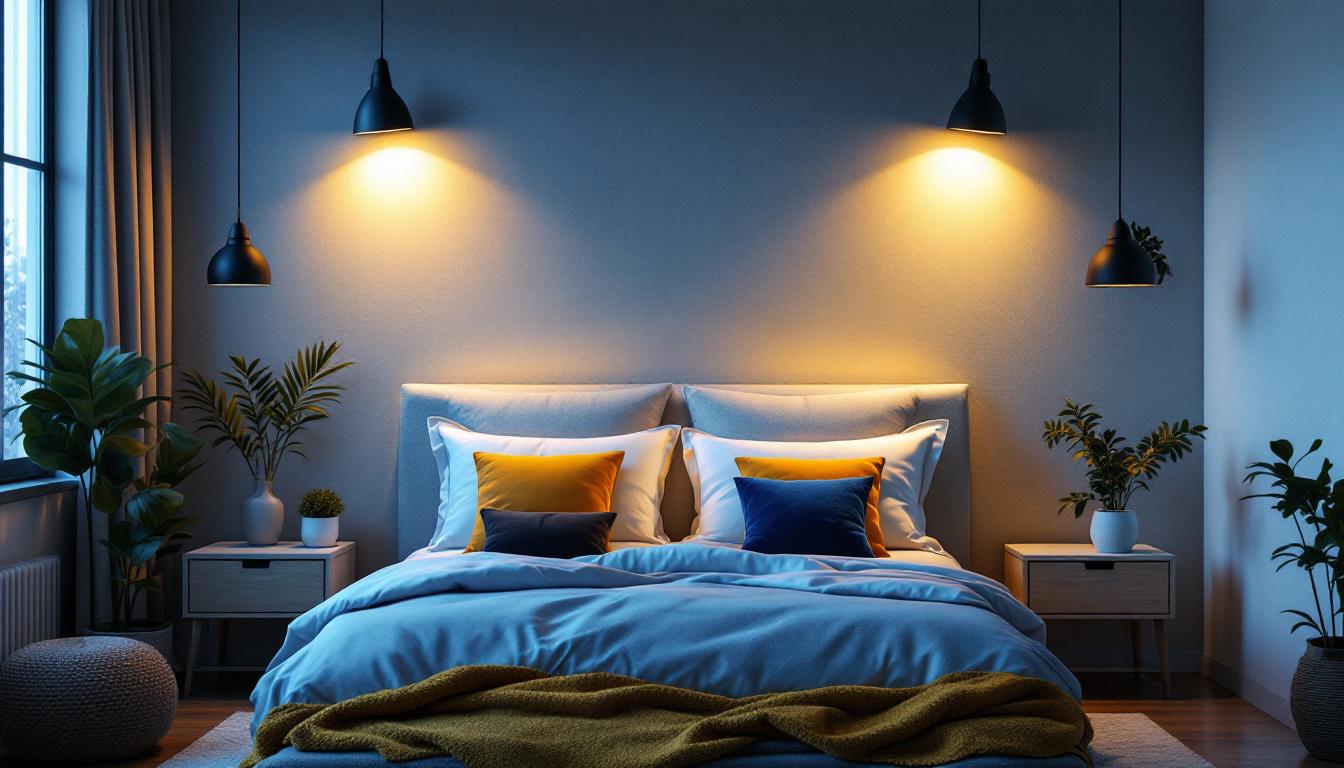
In the realm of lighting design, understanding color temperature is crucial for achieving the desired ambiance and functionality in various spaces. Among the myriad of options available, 3500K lighting stands out as a versatile choice that balances warmth and brightness. For lighting contractors, mastering the nuances of 3500K can significantly enhance project outcomes and client satisfaction. This article delves into essential tips and insights for effectively utilizing 3500K lighting in your projects.
Color temperature is measured in Kelvin (K) and plays a pivotal role in how light is perceived in different environments. The scale ranges from warm tones, typically found at lower Kelvin values, to cooler, bluish tones at higher values. Understanding this spectrum is fundamental for lighting contractors, as it influences both the aesthetics and functionality of spaces. The choice of color temperature can dramatically affect mood and productivity, making it an essential consideration in design.
The Kelvin scale categorizes light into various ranges, with lower values (2000K-3000K) producing warm, cozy light, ideal for residential settings. Mid-range values (3500K-4100K) offer a balance, making them suitable for both residential and commercial applications. Higher values (5000K and above) emit a cooler, more clinical light, often used in offices and healthcare facilities. This differentiation is crucial, as the right color temperature can enhance the functionality of a space, influencing how people interact with their environment.
3500K lighting strikes a harmonious balance, offering a soft white light that is neither too warm nor too cool. This makes it an excellent choice for diverse applications, from retail spaces to hospitality environments. It creates an inviting atmosphere while ensuring that colors are rendered accurately, enhancing the overall aesthetic appeal of a space. Additionally, this temperature is often favored in places where people gather, such as restaurants and cafes, as it promotes a sense of comfort and relaxation, encouraging patrons to linger longer.
Moreover, 3500K lighting is versatile enough to adapt to various design styles, from modern minimalist to rustic charm. Its neutral tone complements a wide range of color palettes, making it easier for designers to create cohesive looks. In commercial settings, this temperature can also enhance product displays, making items appear more appealing without distorting their true colors. As such, understanding the implications of color temperature not only aids in creating visually pleasing environments but also supports business objectives by enhancing customer experience.
Understanding where and how to implement 3500K lighting can significantly impact the success of a project. Its versatility allows it to be used in various settings, each benefiting from its unique qualities.
In residential settings, 3500K lighting is ideal for living rooms, kitchens, and dining areas. It provides a warm yet vibrant atmosphere, making spaces feel welcoming and comfortable. When used in combination with dimmers, 3500K can easily transition from a lively gathering space to a cozy retreat. This adaptability makes it perfect for family gatherings or quiet evenings at home, where the lighting can be adjusted to match the mood. Additionally, the soft glow of 3500K lighting can enhance the colors of interior decor, creating a harmonious environment that feels both stylish and inviting.
For commercial applications, such as retail stores and restaurants, 3500K lighting can enhance product displays and create an inviting dining experience. It helps in showcasing merchandise effectively while maintaining a pleasant ambiance that encourages customers to linger longer. In retail settings, this color temperature can highlight the textures and colors of products, making them more appealing to potential buyers. In restaurants, 3500K lighting can evoke a sense of intimacy and warmth, encouraging patrons to relax and enjoy their meals, which can lead to increased customer satisfaction and repeat visits.
In office environments, 3500K lighting can improve focus and productivity. It offers a balance that reduces eye strain while providing sufficient brightness for tasks. Incorporating this color temperature in collaborative spaces can foster a more engaging and dynamic work atmosphere. Furthermore, studies have shown that lighting can influence mood and energy levels; thus, 3500K lighting can help create a stimulating environment that promotes creativity and teamwork. By strategically placing this lighting in areas where brainstorming and collaboration take place, companies can enhance employee interactions and overall job satisfaction, leading to a more productive workforce.
The choice of fixtures plays a crucial role in how 3500K lighting is perceived and utilized in a space. Selecting the right type of fixture can enhance the effectiveness of the lighting and contribute to the overall design aesthetic.
LED fixtures have gained popularity due to their energy efficiency and longevity. When selecting 3500K LED bulbs, it’s essential to consider the quality of light they emit. Look for products with a high Color Rendering Index (CRI) to ensure that colors appear vibrant and true to life. Traditional incandescent or halogen bulbs can also be used, but they may not offer the same energy savings or lifespan as LED options.
Effective lighting design often involves layering different types of light sources. Combining ambient, task, and accent lighting can create depth and dimension in a space. When using 3500K lighting, consider how it interacts with other light sources to achieve a balanced and inviting atmosphere.
The design and placement of fixtures can greatly influence the effectiveness of 3500K lighting. Pendant lights, recessed lighting, and wall sconces can all be utilized to create different effects. Proper placement is key; for instance, placing fixtures at varying heights can add visual interest and enhance the overall lighting scheme.
Proper installation is essential for maximizing the benefits of 3500K lighting. Adhering to best practices can ensure that the lighting performs optimally and meets the needs of the space.
Before installation, it is vital to adhere to local electrical codes and safety standards. Ensure that all wiring is correctly rated for the fixtures being installed. Proper grounding and circuit protection are essential to prevent electrical hazards and ensure the longevity of the lighting system.
After installation, testing the lighting is crucial. Observe how the 3500K light interacts with the space at different times of the day. Adjustments may be necessary to optimize brightness levels and ensure that the lighting meets the intended design goals. Dimmer switches can be a valuable addition, allowing for flexibility in lighting levels based on the time of day or activity.
Educating clients about the benefits and applications of 3500K lighting can enhance their satisfaction and understanding of the project. Providing insights into how to use dimmers, adjust fixtures, and maintain the lighting can empower clients to make the most of their new lighting system. This not only fosters trust but also positions the contractor as a knowledgeable resource in the industry.
While 3500K lighting offers numerous benefits, it is not without its challenges. Being aware of potential issues and having solutions at hand can streamline the installation process and improve client satisfaction.
One common challenge with 3500K lighting is ensuring color consistency across different fixtures. Variations in manufacturing can lead to slight differences in color temperature, which may be noticeable when multiple fixtures are used in a single space. To mitigate this, always source lighting products from reputable manufacturers and consider using fixtures from the same product line to ensure uniformity.
Another issue that may arise is overly bright spaces, particularly in areas with abundant natural light. In such cases, layering lighting and utilizing dimmers can help control brightness levels. Additionally, strategically placing fixtures can minimize glare and create a more comfortable environment.
Managing client expectations is crucial, especially when introducing them to the concept of 3500K lighting. Providing samples, mock-ups, or virtual renderings can help clients visualize the final outcome. Open communication throughout the project can also alleviate concerns and ensure that the final result aligns with their vision.
The lighting industry is continually evolving, with new technologies and trends emerging regularly. Staying informed about these developments can position lighting contractors at the forefront of the industry.
Smart lighting technology is gaining traction, allowing users to control lighting remotely via smartphones or voice-activated devices. Integrating smart technology with 3500K lighting can enhance user experience, offering customizable settings based on personal preferences and activities.
As sustainability becomes a priority in design, energy-efficient lighting solutions are in high demand. Contractors should stay abreast of advancements in LED technology and energy-saving practices to meet client needs while promoting environmentally friendly options.
Human-centric lighting focuses on the impact of light on human well-being. This trend emphasizes the importance of adjusting color temperatures throughout the day to align with natural circadian rhythms. Incorporating 3500K lighting into a human-centric design can create healthier, more comfortable environments.
Mastering the use of 3500K lighting is essential for lighting contractors looking to enhance their projects and meet client expectations. By understanding color temperature, exploring diverse applications, selecting the right fixtures, and adhering to best installation practices, contractors can create inviting and functional spaces. Additionally, staying informed about industry trends and addressing common challenges will position contractors as trusted experts in the field. With these tips in mind, lighting contractors can confidently harness the power of 3500K lighting to elevate their work and delight their clients.
Ready to take your lighting projects to the next level with 3500K lighting solutions? At LumenWholesale, we provide lighting contractors with the highest quality, spec-grade lighting products at prices that can’t be beaten. Say goodbye to local distributor markups and hello to a vast selection of reliable lighting that meets the most stringent industry standards. Plus, with free shipping on bulk orders, you can stock up on premium lighting without worrying about hidden fees or compromises. Elevate your lighting game and ensure every project shines with Wholesale Lighting at the Best Value from LumenWholesale.

Discover the common pitfalls lighting contractors face with commercial light fixtures and learn how to avoid them.

Discover how choosing the right lighting for drop ceilings can significantly cut costs for lighting contractors.

Discover the crucial role of over-the-bed lighting in modern design and why it’s a must-know for lighting contractors.

Discover effective strategies for training your team in lighting with Hi Lite Lighting.